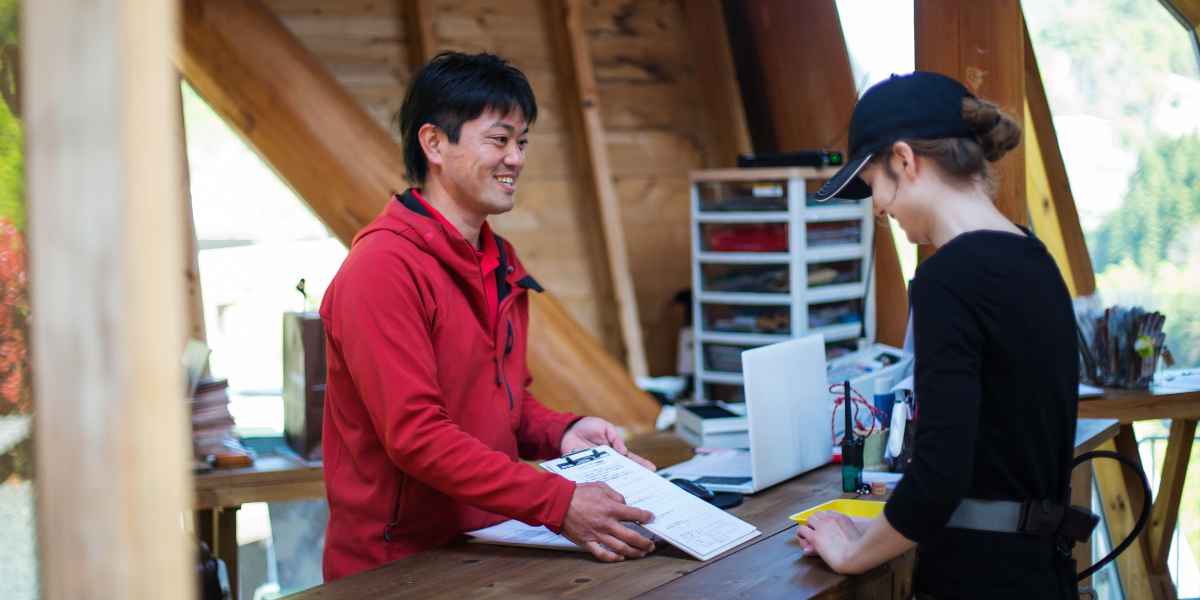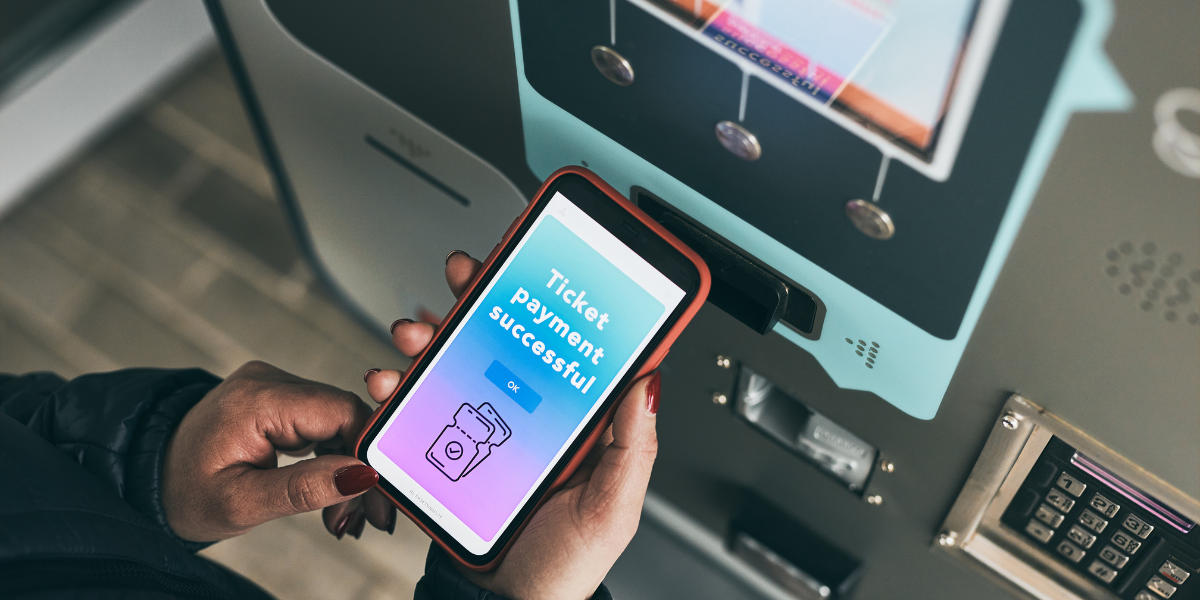Adventure Park logistics is the planning and coordination of all logistical elements involved in the management and operation of a park, such as transportation, facilities, and visitor services. Effective Park logistics is essential for ensuring that visitors have a positive experience, that park resources are protected and preserved, and that the park operations run smoothly and efficiently. In this article, we will discuss some key elements of park logistics and how they contribute to the success of park management. We will also address some of the key points related to the importance of visitor logistics and throughput to the profitability of adventure Parks.
- Transportation: One of the most important elements of park logistics is transportation. This includes everything from the planning of park access roads and parking facilities to the coordination of shuttle services and bike rentals. This allows visitors to safely and efficiently access the park, reducing traffic congestion and minimizing the impact on the park's natural resources.
- Facilities: Another key element of park logistics is the planning and management of facilities within the park. This includes the development and maintenance of restrooms, visitor centers, picnic areas, and other facilities that are necessary for the comfort and safety of visitors.
- Resource management: Park logistics also includes managing the resources within the park, such as preserving and protecting natural habitats, maintaining trails and preserving historical sites. This ensures that the park resources are protected for future generations to enjoy.
- Visitor Services: Park logistics also includes the coordination of visitor services, such as ranger-led tours, educational programs, and special events. These services enhance the visitor experience and promote an understanding and appreciation of the park's natural and cultural resources.
- Emergency Management: Planning and preparation for potential emergencies such as natural disasters, fires and medical incidents is also important aspect of park logistics. This includes having emergency response plans in place, ensuring that staff are trained to handle emergencies and having adequate communication systems in place.
- Data collection and monitoring: Collecting data on visitor use, resource condition and other park operations is critical aspect of park logistics. This allows park managers to make informed decisions, identify trends and make adjustments to park operations as needed.
Adventure Park logistics is a crucial aspect of park management. By effectively planning and coordinating transportation, facilities, resource management, visitor services, emergency management and data collection and monitoring, park managers can ensure that visitors have a positive experience and that the park's resources are protected and preserved.
Effective Logistics in Adventure Parks
Streamlining the logistics of visitors in Adventure parks is the process of improving and simplifying the various logistical elements involved in managing the flow of visitors in a theme park. This includes everything from transportation, to ticketing, to park access and more. The goal is to create a more efficient and enjoyable experience for visitors while also reducing wait times and congestion within the park.
- Online ticketing and reservations: One way to streamline the logistics of visitors in a theme park is to implement online ticketing and reservation systems. This allows visitors to purchase tickets and make reservations in advance, reducing wait times and congestion at the park's entrance.
- Fast Pass and Express Lane systems: Another way to streamline the logistics of visitors in a theme park is to implement Fast Pass and Express Lane systems. These systems allow visitors to reserve specific ride times or skip the line for popular attractions, reducing wait times and improving the overall visitor experience.
- Park access control: Another way to streamline the logistics of visitors in a theme park is to implement park access control systems. This can include RFID technology and biometric identification, which helps to manage the flow of visitors and improve security within the park.
- Real-time information systems: Real-time information systems, such as mobile apps and digital signage, can provide visitors with up-to-date information about wait times, show schedules, and other important information. This allows visitors to plan their day more efficiently and reduces congestion in popular areas of the park.
- Transportation: Streamlining the transportation logistics within the park can also help to improve the visitor experience. This can include the implementation of shuttle buses, trams, and other forms of transportation to help visitors move around the park more efficiently.
Streamlining the logistics of visitors in a theme park is crucial for creating a more efficient and enjoyable experience for visitors. By implementing online ticketing, Fast Pass and Express Lane systems, park access control, real-time information systems and efficient transportation, theme parks can reduce wait times, improve visitor experience and make the park more accessible and enjoyable.
Adventure Park Logistics Model
An Intelligent Visitor Logistics Model is a system that utilizes advanced technologies, such as artificial intelligence (AI) and the Internet of Things (IoT), to improve the planning and coordination of logistical elements involved in the tourism industry. The goal of an Intelligent Visitor Logistics Model is to provide a more personalized and efficient experience for tourists while also promoting sustainability and economic growth.
- Predictive analytics: An Intelligent Visitor Logistics Model utilizes predictive analytics to forecast tourist demand and optimize the allocation of resources, such as accommodations and transportation. This helps to reduce waste and improve the overall efficiency of the tourism industry.
- Personalization: An Intelligent Visitor Logistics Model utilizes data analysis to personalize the tourist experience by providing tailored recommendations and personalized offers. This can include suggesting activities, tours and points of interest based on a tourist's interests and preferences.
- Real-time monitoring: An Intelligent Visitor Logistics Model utilizes IoT and other technologies to monitor and track tourist activity in real-time. This allows for more efficient and effective management of resources, such as accommodations and transportation, and improves the overall safety and security of tourists.
- Automation: An Intelligent Visitor Logistics Model uses automation to streamline and simplify logistics processes, such as booking and check-in. This improves the overall efficiency of the tourism industry and provides a more seamless experience for tourists.
- Integration: An Intelligent Visitor Logistics Model integrates various systems and technologies such as transportation, accommodation, and activities, providing a holistic and seamless experience for tourists.
A Visitor Logistics Model utilizes advanced technologies to improve the planning and coordination of logistical elements in the tourism industry. By utilizing predictive analytics, personalization, real-time monitoring, automation and integration, an Intelligent Visitor Logistics Model can provide a more personalized and efficient experience for tourists while also promoting sustainability and economic growth.

Why is Logistics in Adventure Parks so important?
A visitor logistics model is important for several reasons:
- Enhancing the visitor experience: A well-designed visitor logistics model can help to streamline the check-in process and reduce wait times, providing a more seamless and enjoyable experience for visitors.
- Improving security: A visitor logistics model can include features such as identification verification and access control, which helps to ensure that only authorized individuals are granted access to the facility and improves the overall security of the facility.
- Optimizing resource allocation: A visitor logistics model can help to optimize the allocation of resources such as parking, accommodations, and staff. This can help to reduce waste and improve the overall efficiency of the facility.
- Facilitating data collection and analysis: A visitor logistics model typically includes the ability to generate reports and analytics on visitor activity, such as the number of visitors, how long they stayed, and which areas of the facility they accessed. This allows facility managers to better understand visitor activity and make informed decisions on future visitor management strategies.
- Enhancing emergency management: A visitor logistics model can also include emergency management plans, which can help to ensure that the facility is prepared to handle emergencies, such as natural disasters or medical incidents, in an efficient and effective manner.
- Promoting sustainability: A visitor logistics model can also include strategies for sustainability such as promoting conservation, fostering local economic development and minimizing waste and pollution.
A visitor logistics model is important for improving the overall visitor experience, ensuring security, optimizing resource allocation, facilitating data collection and analysis, enhancing emergency management and promoting sustainability.
Logistic Model versus throughput
Visitor logistics model and throughput are related in that they both play a critical role in managing the flow of visitors in a facility or park.
A visitor logistics model refers to the system of planning, organizing, and managing the various logistical elements involved in the management and operation of a facility or park, such as transportation, facilities, visitor services, and more.
Throughput, on the other hand, refers to the rate at which visitors are able to move through and experience a facility or park. It is a measure of the efficiency of a visitor logistics model and its ability to manage the flow of visitors.
A well-designed visitor logistics model can help to improve throughput by reducing wait times, optimizing resource allocation, and streamlining check-in and other processes. For example, implementing online ticketing, fast pass and express lane systems, and park access control can improve throughput by reducing congestion and wait times at the entrance and popular attractions.
On the other hand, if throughput is poor, it could be an indication that the visitor logistics model needs to be reviewed and improved. Low throughput can result in long wait times, congestion, and dissatisfaction among visitors, which can ultimately lead to a decline in park attendance and revenue.
Visitor logistics model and throughput are closely related, a well-designed visitor logistics model can improve throughput, which can lead to a better visitor experience, increased revenue, and the protection of resources.

Throughput and Customer Experience are Key
Throughput in an Adventure Park park refers to the rate at which visitors are able to move through and experience the park. It is a measure of the efficiency of the park's operations and its ability to manage the flow of visitors.
To define a park's throughput, several factors should be considered:
- Wait times: One of the most important factors in defining a park's throughput is the amount of time visitors spend waiting in line for rides and attractions. The shorter the wait times, the higher the throughput.
- Capacity: The capacity of a park's rides and attractions is another important factor in defining throughput. The higher the capacity, the more visitors the park can accommodate, and the higher the throughput.
- Visitor flow: The flow of visitors throughout the park is another important factor in defining throughput. A park with poor visitor flow, such as congested walkways and bottlenecks, will have lower throughput than a park with well-designed visitor flow.
- Staffing: The number of staff members and their effectiveness in managing the park's operations also play a role in defining throughput. Adequate staffing can help to ensure that rides and attractions are running efficiently, reducing wait times and improving visitor flow.
- Weather conditions: Weather conditions can also affect throughput, heavy rain, high wind or extreme heat can cause rides to shut down and visitors to leave the park.
- Special events and holidays: Special events and holidays can also impact throughput; parks usually have higher attendance on these days and may have different operations procedures in place.
Customer satisfaction in leisure parks defines the degree to which visitors are pleased with their experience at the park. High customer satisfaction is crucial for the success of a leisure park as it can lead to repeat business and positive word-of-mouth recommendations.
There are several factors that contribute to customer satisfaction in leisure parks:
- Wait times: Long wait times for rides and attractions can greatly impact customer satisfaction. Parks that are able to reduce wait times through the use of virtual queue systems, ride reservation systems, and other technologies can improve customer satisfaction.
- Ride and attraction quality: The quality of rides and attractions is another important factor in customer satisfaction. Visitors expect to have a safe and enjoyable experience on rides, and the quality of the attractions and the maintenance of the park are key factors in achieving this.
- Park amenities: Amenities such as restrooms, food and beverage options, and seating areas can greatly impact customer satisfaction. Parks that are able to provide clean and well-maintained amenities can improve customer satisfaction.
- Customer service: The quality of customer service provided by park staff can also greatly impact customer satisfaction. Visitors expect to receive friendly and helpful service, and parks that are able to provide this can improve customer satisfaction.
- Safety and security: Safety and security are key factors in customer satisfaction. Visitors expect to feel safe and secure while at the park, and parks that are able to provide this can improve customer satisfaction.
- Value for money: Visitors expect to feel that they have received good value for their money, and parks that are able to provide this can improve customer satisfaction.
In conclusion, customer satisfaction in leisure parks is crucial for the success of the park. Parks that are able to provide a positive experience through reducing wait times, providing high-quality rides and attractions, park amenities, customer service, safety and security and value for money can improve customer satisfaction and lead to repeat business and positive word-of-mouth recommendations.
Designing a visitor logistics and throughput model for an Adventure Park
A visitor logistics and throughput model for a leisure park is a system of planning, organizing, and managing the various logistical elements involved in the operation of the park, with a specific focus on providing a positive experience for visitors while also protecting and preserving the park's resources and ensuring that park operations run smoothly and efficiently.
This model includes elements such as transportation, ticketing, park access, visitor flow, staffing, and emergency management. The goal of this model is to optimize the allocation of resources, reduce wait times, and improve the overall visitor experience.
Throughput, on the other hand, refers to the rate at which visitors are able to move through and experience the park. It is a measure of the efficiency of the park's operations and its ability to manage the flow of visitors. A well-designed visitor logistics model can help to improve throughput by reducing wait times, optimizing resource allocation, and streamlining check-in and other processes.
Therefore, the visitor logistics and throughput model is a comprehensive approach to manage the flow of visitors in a leisure park, by designing and implementing strategies that aim to provide a positive experience for visitors, protecting and preserving resources, and managing the park's operations efficiently.
Designing a visitor logistics and throughput model for a leisure park involves several key steps:
- Conduct a park assessment: The first step in designing a visitor logistics and throughput model is to conduct a thorough assessment of the park. This includes analyzing the current park layout, visitor flow, and the capacity of rides and attractions. The assessment should also include an analysis of the park's infrastructure, such as parking, restrooms, and food and beverage options.
- Identify bottlenecks: Once the assessment is complete, the next step is to identify bottlenecks in the park's operations that are causing delays and reducing throughput. These can include long wait times for popular rides and attractions, congested walkways, and inadequate parking and restroom facilities.
- Develop a plan: After identifying bottlenecks, the next step is to develop a plan to address them. This can include implementing virtual queue systems, ride reservation systems, and park access control to reduce wait times. It can also include expanding parking and restroom facilities and improving visitor flow.
- Implement technology: Utilize technology to improve the visitor experience, such as mobile apps that allow visitors to purchase tickets and make ride reservations in advance, and digital signage that provides real-time information about wait times and show schedules.
- Monitor and measure: Once the visitor logistics and throughput model is in place, it is important to monitor and measure its effectiveness. This includes tracking visitor flow and wait times, as well as gathering feedback from visitors. This information can be used to make adjustments to the model as needed.
- Staffing and Training: Adequate staffing is crucial to ensure the smooth operation of the park and to provide visitors with an excellent experience. Staff should be trained to handle visitors inquiries, and to provide the visitor with information and assistance.
In conclusion, designing a visitor logistics and throughput model for a leisure park involves conducting a park assessment, identifying bottlenecks, developing a plan to address them, implementing technology, monitoring and measuring the model's effectiveness, and ensuring adequate staffing and training. By following these steps, a leisure park can improve the visitor experience, increase revenue, and protect resources.

Additional expert information on the Adventure Business
Interested to read more about the Adventure Business with our expert articles?
- Logistics and throughput in Adventure Parks, key elements in Customer satisfaction
- Profitable Upgrades for Aerial Adventure Parks
- Integrating Gaming Technology into Adventure Parks
- Optimizing Adventure Park Operations: The Power of Predictive Analytics
- The Benefits of Integrating Urban Adventure Play in Commercial Retail
- Creating Profitable Adventure Parks: Tips and Strategies
- Roller Coaster Zipline: The Thrilling and Profitable Amusement Solution
- Prioritizing Safety: The Key to Success in Aerial Adventure Parks
- Maximize Your Adventure Park's Potential with an Online Reservation System
- Importance of a Safety and Quality Management System at Adventure Parks
- Virtual Reality Training in Adventure Parks: Revolutionizing Skill Development and Safety
- Climbing to New Heights: Boosting Traffic and Revenue with an Indoor Ropes Course
- How to Launch a Zip Line Company
- Ride a bike modified to attach to a zipline cable
- Adopting Universal Design and Adaptive Techniques for Inclusive Adventure
- From Skills to Thrills: How to Start and Run a Successful Adventure Business
- Thinking of investing and operating a Zipline? We got you covered with this expert article!
- Rope Course Construction: A Comprehensive Guide
- Leisure and Adventure in Retail Real Estate: The Future of Shopping
- The Benefits of Netted Attractions for Operators and Guests
- Thrills Adventure for Family Entertainment Centers’













